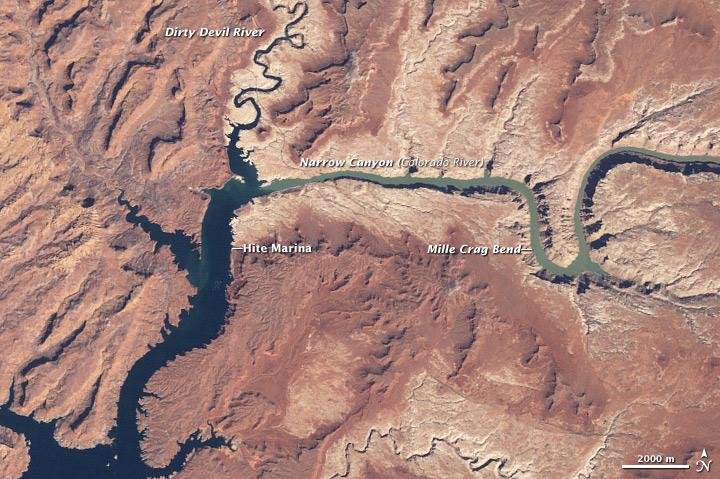COCONINO COUNTY, Ariz., May 26 (UPI) -- Diminished by overzealous water withdrawals and a lengthy drought throughout the Southwest, Lake Powell, the meandering mass of water held by Glen Canyon dam, has slowly emptied in recent years. It now sits below half capacity.
NASA's Earth Observatory recently released satellite imagery showcasing the decade-plus drying-up of the reservoir that helps quench the thirst of more than 20 million Americans. The images above show Lake Powell, from 1999 to the present, as its water levels have slowly descended down the canyon walls.















